Do I Need Permission to Read Tarot?
What is it about tarot that makes people shy?
Well, there's the mystery. The poetic images seem both familiar and foreign. What messages are they hiding? What do they mean? And how can one lean about them?
There's also the mysticism. Tarot comes with a lot of history, lore, and superstition that, depending on who you ask, means everything or nothing. Are the cards a tool of the devil? An inscrutable magical system only understandable after years of study and an elaborate initiation? Both?
No wonder tarot can seem overwhelming to new learners.
While I've yet to encounter any wild tarot initiation ceremonies or tarot-related demons, I have encountered lots of anxiety around getting tarot "right," especially from people just starting out.
It's interesting how when we want to learn something new we throw out a lot of obstacles for ourselves. For example, getting caught up with the sheer number of cards - it's too much to memorize! I'll just buy that deck I've had my eye on later...
This is especially true for things we're deepy interested in or areas that reflect a part of ourselves we may be afraid to express. Tarot gets at all these tender spots. As a system it excels in teaching us more about ourselves and encouraging spritual expression. Unfortunately, these aren't always valued by our culture and often it's easier to push our curiosity for the cards aside, directing our focus to more "serious" matters.
I think that's a shame.
I always tell anyone I read for that if they have even the slightest interest they should pick up a deck for themselves and get to know it. Whether you're going to be reading professionally or simply drawing a card a day for personal inspiration, the tarot has so much to offer each and every one of us. You can even buy a deck and ignore it! When the time's right, I bet you'll start shuffling through it.
So if you're looking for permission or some sort of calling, I'm happy to give it to you. Here it is, nice and official: you have my enthusiastic support and permission to embark on the study of the tarot. You are blessed in your jouney wherever it may take you and you are absolutely qualified to add the wisdom of your interpretations to the practice of tarot. We need you. Welcome!
And as for the calling, if you're reading this you've probably already heard it within yourself.
Now get out there and snag yourself your first tarot deck.
And if you have any questions don't hesitate to reach out. I love to help people along their tarot journeys in any capacity, whether it's through a class, card meanings, this blog, individul mentorship, or a simple email. I'd love to hear from you.
Choosing Your First Tarot Deck
Choosing a tarot deck can seem daunting when you’re just starting. With so many options out there (Bohemian Cat Tarot, Steampunk Tarot, even Lisa Frank Tarot!) the choices become epic, fast.
Add the nerves around the system itself – it’s so complicated, how am I ever going to learn all 78 cards, do you mean I can read tarot? – and you’re on the fast track for overwhelm.
In a way, I’m eternally grateful for the limited options I had when I started. In the new age bookstore in my town there were probably only three decks, and among those only one really jumped out to me. It was the classic Rider-Waite-Smith, and it has been my go-to deck ever since.
Now, thanks to the magic of the internet, my collection has grown exponentially. Spending a great deal of time in the tarot-verse has me stumbling on beautiful decks often (with disturbing consequences for my budget!) So with those new to tarot in mind I’ve compiled my tips for choosing your first deck.
Let’s get things started…
1. Go Classic
I’m not one for giving direct instructions, so this is as close as I’ll get: If you want to start off learning from the source, get yourself a copy of the Rider-Waite-Smith deck (or the other OG decks of the other two major systems – the Marseille or the Thoth.)
As a reader who primarily uses the RWS, I’ll speak about that tradition. Not only does it resonate with me the most, but it also serves as an excellent jumping off point for learners.
This deck, published in 1910, is the basis of many modern tarot decks. Known somewhat creepily as “RWS clones,” they’ll be a snap to use after you’ve acquainted yourself with the original. The layout, 22 major arcana cards and 58 illustrated pips in four suits, is full of imagery and symbolism you can read so many ways. Think incorporating astrology, numerology, esoteric traditions such as kabbalah, or simply your intuition.
Personally, I adore the illustrations done by Pamela Coleman Smith. For those not taken by the original, there are many other versions available, mostly with retouched colors. Try the Radiant if you want a vibrant pop or the Universal for a more soothing look. The Albano-Waite even has psychadelic colors if you’re feeling trippy.
And conveniently enough, most tarot books address this system, so you’ll have no shortage of resources at your fingertips. With this in mind, I suggest grabbing a copy of this deck even if it’s not your #1 tarot true love - you can use it as a cross reference when using RWS books and other resources.
2. Shop Around
But say you’re not drawn to the classic, Medieval-style illustrations of the RWS and want to find something more exciting. Maybe you’re curious about a modern deck like The Fountain Tarot or a classic feminist deck like the Motherpeace Tarot.
This is where the internet is truly our friend. Google around and find decks you’re interested. Read reviews and look at as many photos as you can get your paws on. See how the cards are grouped and whether the illustrations resonate with you. You can find plenty of reviews on forums like Aeclectic and on tarot blogs. Keep it light – you don’t need to compile a treatise on why you’re choosing a certain deck. Just follow your curiosity and browse away.
3. Find a Hard Copy
There’s nothing like experiencing the real thing. If you have a metaphysical shop or even a bookstore that carries tarot, stop in and see if they have an opened copy of the deck you can see. Hold the cards, even give them a shuffle if you can. You’ll be handling your deck frequently and how they feel in your hand – the weight of the cardstock, the quality of the printing – is an important part of your experience with a deck.
If you have a friend who reads tarot, ask to see their collection. (I love showing off my cards, and there’s nothing more fun that connecting others with tarot. Plus, it’s fascinating seeing what decks people are drawn to!)
But fear not if you can’t see a deck in person – the quality of printing today is excellent and many reviews address the tactile side of cards. If you’re simply feeling drawn to something, go for it and trust your intuition. Which leads us to my final tip…
4. Follow Your Instincts
Tarot can be used practically and even analytically, but at its root it’s an intuitive tool meant to tap into our subconscious. It’s natural then that how you feel about a deck is the most important thing to keep in mind when making a choice. Your first tarot deck should resonate with a deep part of you, inviting you into its world with captivating images and mystery. Otherwise you won’t be called to work with it and your practice will be a slog when it should sing.
I know people who’ve started with decks outside of any major tarot tradition and developed a lush and personalized reading style with them because they feel deeply connected with the cards. For example, I had a student who resonated deeply with the natural imagery of the Wooden Tarot; as a former naturalist she was immediately able to craft profound and moving readings with the cards because of her natural connection with them. And that’s what’s most important.
Are you finding yourself being strongly drawn to the cards and you’re not sure why? Follow this instinct and get the deck.
I chose the RWS when I was 12 because I was absolutely fascinated with it. I saw the deck and knew I wanted to learn tarot. I was curious, nervous, and in awe of the magical world shown in the cards. Find a deck that does that for you and you’ll be enjoying the world of tarot for years to come.
7 Ways to Prepare for Your Tarot Reading
You’ve just booked your tarot reading. You might be feeling nervous, excited, and intrigued. As a someone who loves getting tarot readings, I know the feeling well.
Having your cards read is an intimate experience. You’re quite literally putting a part of yourself out there and hoping for clarity and guidance in return.
It’s exhilarating and out-of-the-ordinary and that’s the point! But there aren’t many resources for preparation and etiquette.
So here are my tips to ensure that your reading is as relaxing, helpful, and magical as you need it to be.
1. Formulate Your Question
This is worth taking some time with since it directs the entirety of your reading. Snuggle in and really give it some consideration. I find journaling especially helpful in getting all the information out onto the page. After writing for a bit, you may even find that your question is different than you thought. Good news! You can tweak it to your heart’s content before you tell your reader. Phrasing is key. Make sure your question focuses on the heart of your issue and leaves room for steps forward (for tips, see my post about phrasing questions here.) Your reader should be able to tell you if your question works well for your situation. I certainly encourage you to reach out if you’re lost or simply want feedback.
2. Address Questions or Concerns with your Reader
Your tarot reader is your ally. They want to facilitate this insightful and transformative experience for you and should be happy to address any concerns you have before the reading begins. Before you shoot off a long email of questions, however, take a peek at their code of ethics and terms and conditions pages. Most readers have this information readily available on their websites and it’s a good idea to familiarize yourself with their policies and boundaries before the reading begins. If you have any personal preferences such as a deck you’d like to use or a certain topic you don’t feel comfortable addressing, let them know! They’ll be glad to have the extra information to make their reading the best it can be.
3. Center Yourself
Relax and center yourself before the reading takes place. This can be in any way that works best for you. Meditation, a nice walk, even a bath if you can wrangle it. It’s important to feel as grounded as possible (while leaving room for some giddiness, naturally!) Remember that this reading is for you. Tarot reading are meant to be illuminating and healing. Any reader worth their salt will not intentionally pressure you in any direction or make you uncomfortable. Fortunately, there are very few readers like this, and you’ve likely chosen someone who resonates with you and communicates well. So rest up and focus on yourself before the reading starts. It will better prepare you to absorb the information and get the most guidance from the cards.
4. Embrace the Unknown
You’re not going to a tarot reader because you know the answers already. In fact, you’re most likely looking to tarot because thinking through the issue wasn’t getting you anywhere. Tarot is an excellent way to access other channels of knowing like intuition. Open your mind to the information that will come your way and know that it won’t look like your usual approach. Embrace a sense of fun and exploration. You’re about to enter a world of symbols and magic, after all.
5. Recognize Your Ideal Outcome
If there’s a path you hope to take or an outcome you’d like to see, acknowledge it! If necessary, use the outcome to rephrase your question, as in, “what do I need to know for x,y,z to happen.” Having goals can be very helpful in directing your reading, or at the very least will show where your biases and blind spots may be.
6. Brainstorm Further Questions
You might find yourself full of questions before the reading and suddenly at a loss for words once things get going. There’s a lot happening during a tarot reading – those entrancing cards, your reader’s interpretations, your interpretations – and it’s easy to get lost. Write down a few follow up questions or issues you’d like to touch on and bring them with you. Be mindful of the time you have for your reading, of course. Two or three should do the trick.
7. Have Fun
And finally, enjoy yourself! You’ve set the appointment, made your payment, and formulated your question. Now you get to experience the wonders of a tarot reading. Relax, open your mind, and see what the cards have in store for you.
I hope these tips are helpful as you get ready for your next tarot experience. As always, sare any comments or questions below - I'd love to hear from you! Interested in purchasing a reading? Take a peek at my offerings here.
Getting to Know Your First Tarot Deck
So you have your first ever tarot deck.
What a moment!
The wrapper is still on the box and you’re about to meet all 78 cards for the first time.
Now before you break open the little white book that comes with the cards, or grab a larger tome to introduce you to the meanings, wait just a moment. I can’t tell you how much I wish I could go back in time and meet my first deck with a completely open mind.
You have the rest of your life to pour through meanings and learn the history of each card. Hell, each symbol on each card!
But you only have this moment to look at a deck with fresh eyes and experience your own reactions, insights, and interpretations.
This is why I love reading for people who have no experience with tarot. Every time, they give me a priceless take on the cards completely unique to them. My understanding of the card is now so much richer thanks to their insight. They’re looking at the cards with a beginner’s mind and let their intuition run free without the restriction of predetermined meanings.
It’s a beautiful thing!
I urge you to savor the experience of getting to know your first deck (and all those after, of course.) Unbox the cards, feel them in your hands, and lay them out one at a time. As you look at each card, notice how it makes you feel. Does it remind you of anything? What images does it bring up in your mind? Does it bring up a specific emotion?
Write all these impressions down. In doing so, you’re creating a priceless resource that you can return to time and time again. Let your intuition do the talking. Once you’ve recorded these general impressions, consider what the card meaning might be. Have fun here. This is about finding your intuitive interpretations of the cards, not getting anything “right.”
I like to repeat this process with each card, starting with the major arcana. Once all the majors are laid out, look at the entire group. Again, consider the thoughts, memories, feelings, smells, etc. that the cards evoke as a whole.
Write it all down, and note what cards jump out to you, and which ones you find off-putting. Are there symbols you’re drawn to? Colors? Write that down, too.
Repeat with the minor arcana. You’ll soon have the whole deck laid out in front of you. I like to do this with each set of cards I add to my collection. It gives you a great “bird’s eye” view of the deck and helps to illuminate the larger patterns of the cards.
Soak it in, let the images percolate, and, when you’re ready, shuffle and begin experimenting with readings.
As you continue your tarot journey, look back on the meanings and impressions you’ve recorded here. They’re full of insight that’s completely unique to you and essential as you develop your own reading style. I can promise that you you’ll be impressed by the depth and wealth of information you came up with.
3 Tips to Phrase Questions for Tarot Readings
Will I meet a tall, dark stranger? When will I get a promotion? What are the winning lottery numbers for this week?
Hmm... is she being facetious? Why yes I am! These types of questions aren't suited for the tarot. Here's why.
Tarot works best as a map or forecast of the present situation. It does not do well with yes or no questions (and what’s the fun in that?), inquires into the affairs of other people, or specific timetables. Because we are constantly changing and our choices affect where we end up – thank goodness! – the future is never guaranteed. We can, however, see what general direction we’re heading in based on how we’re living now.
But fear not. Maybe you are curious about that tall dark stranger. There are many ways to reframe your question to get pertinent information about the situation.
I’ve outlined three tips to help phrase your tarot questions to get a clear and accurate reading.
1. What do I need to know about…
Use this phrasing to open up a narrow question. If you want to know about that alluring man you just met change you question accordingly:
Is Mr. Handsome interested in me? --> What do I need to know about my growing relationship with Mr. Handsome?
Why it works: Instead of focusing on outcome (yes or no) this question focuses on you and the present moment. It’s much more constructive. With this reading you're not waiting for the yes or no prediction to come true. You get to see how your outlook and actions influence your relationship. Now there’s something you can work with!
2. How and Why
Use how and why to expand on the journey ahead (how) and your motivations (why). For example, say you want to move and are wondering when you’ll get your act together.
When will I move? --> How will my move unfold?
Why it works: the reading will reflect the process of moving – including your motivations, fears, incoming energies, etc. - allowing you to gain understanding of the things working for and against you. With this you can gain an idea of how long it can take and give you the opportunity to make changes to slow down or charge full speed ahead.
3. Focus on Yourself
You may be tempted to ask the tarot about another person. You’re dying to know what your aloof coworker thinks of you. Why not ask the tarot? I don’t think so. Not only is this a fairly shifty thing to do, but it also bypasses the true connection that you as the seeker have with the cards. Use this to your advantage like so:
What does Trisha think of me? --> Why am I concerned about Trisha’s opinion?
Why it works: You’re refocusing the question back on yourself, the place where you can make the most change. The cards will truly reflect your situation and not overstep into speculating about Trisha’s. If you're thinking that sounds like a boring reading to get, you're right. This exercise helps identify which questions are worth asking tarot. You might want to change your question and choose something more pertinent to you. Good boundaries = good readings.
To Recap
DO Broaden the focus to the whole situation by avoiding yes and no questions.
DO start your question with “how” and “why” to get the most information.
DO keep it about yourself in readings about relationships with other people.
DON’T limit yourself with fatalistic yes and no questions.
DON’T fixate on specific timelines.
DON’T ask for lottery numbers ;)
Still curious about questions? Stuck on something you’re trying to phrase? Let me know in the comments below.
For more information on the uses and limitations of tarot see my FAQ and Code of Ethics.
Feel like you're got the perfect question you want to explore? I'd love to help answer it! Book a reading with me here.
8 Books to Get You Started on Your Tarot Journey
So you have a tarot deck (or two, or three - I know how it goes!)
Now what???
Things have changed a lot since I was an awkward teenager first discovering the tarot. Picture me lurking in my bedroom late at night with my trusty Rider-Waite-Smith deck and two dog-eared books and you get the picture.
So you have a tarot deck (or two, or three - I know how it goes!)
Now what???
Things have changed a lot since I was an awkward teenager first discovering the tarot. Picture me lurking in my bedroom late at night with my trusty Rider-Waite-Smith deck and two dog-eared books and you get the picture.
A few gems to get you started
In a way, the limitations of the time were helpful. Without lots of book choices on Amazon or card meanings online I was able to focus on the information I had with me. Now I have to sit on myself to avoid spending too much on books or getting sucked into an internet vortex. Sometimes I’m successful, and sometimes… not so much.
So my perhaps old-timey recommendation? If you’re starting out, grab a book or two and really get to know them. Practice with lots of readings and thumb through to the meaning of each card. Notice what rings true to you and what confuses you. Write it all down. I can’t overstate the usefulness of a tarot journal.
You’re well on your way to tarot proficiency!
Here are the books that guided me on my journey, as well as some newer additions that can do the same for you.
Learning the Tarot: A Book for Beginners by Joan Bunning
I started out on this book and it is wonderful. A comprehensive tarot course with succinct and accessible card definitions perfect for the beginner. This one is concise and easy to navigate with helpful sections on cards that compliment each other and just enough information to get you started without overwhelming you. Joan Bunning also offers the course for free on her website here, though I recommend supporting her wonderful work and enjoying the feel of a book in your hands.
Seventy-Eight Degrees of Wisdom by Rachel Pollack
I adore this book. It’s like an old friend I will never get tired of having tea with. Filled with wonderful insight and deep meaning, do yourself a favor and pick it up. There’s a reason why this is sometimes referred to as the “Bible of tarot.” Pollack’s immersive writing style and serious tarot chops make each page a fountain of insights. It has a more spiritual and historical orientation, but is never overly-dense or dogmatic. After reading it you feel deeply connected to the cards on multiple levels.
the creative tarot: a modern guide to an inspired life by jessa crispin
For those of you who want a less-woo, more focused look at the tarot, Jessa Crispin’s book offers a creativity-centered approach to the cards. Her writing is incredibly clear and engaging and she illustrates how to use the cards to tap into the creative process. Each card meaning connects to artists with inspiring connections to their lives and concludes with recommendations of songs, paintings, plays, and films for further insight.
Tarot Wisdom by Rachel Pollack
As anyone who’s studied tarot for a long time will tell you, you never stop learning! In this book, Rachel Pollack returns to the cards and shares what she’s learned since the publication of Seventy-Eight Degrees of Wisdom. Expect more beautiful and insightful tarot interpretation put together in a masterful, easy-to-follow way. This book is very in-depth and incorporates many other mystical traditions into tarot. I suggest getting this after you’re familiar with Seventy-Eight Degrees of Wisdom only because it’s easy to get carried away with this much magic.
Holistic Tarot by Benebell Wen
What a tome! This book is packed with card meanings and much, much more. Inside you’ll find a wealth of spreads and explorations into the history, uses, and philosophy behind tarot. And pretty much anything else you want to know about the practice. The only caveat? It’s a lot to digest. For those looking to dip their toes in, this book can be a little too much too soon, but if you’re the kind who wants all the information in one book, this is the one for you!
The Tarot: History, Symbolism, and Divination by Robert M. Place
My favorite book on the history of tarot. If you’re persnickety about historical accuracy and want to cut through the occult legends and myths around tarot pick this one up asap. Place’s scholarship is excellent and clarifies many of the misconceptions about tarot’s origins with clarity and respect. His explorations of the meanings of the Marseille and R-W-S systems are very enlightening, too, and this book makes for an excellent reference you’ll turn to again and agan.
The Encyclopedia of Tarot vol. 1 by Stuart Kaplan
Decks, decks, and more decks! A great resource on tarot history and, you guessed it, tarot decks. From the Medieval origins of the tarot through the twentieth century, this book has all the information and illustrations you need. Helpful for those curious about the evolution of tarot as well as those interested in collecting. Start with volume one for a useful intro, and add others as your journey progresses. The extensive photos also help curb excessive deck purchases…
modern tarot: connecting with your higher self through the wisdom of the cards by michelle tea
A newer addition, this book has a wonderfully approachable tone and engaging anectdotes from the author’s life and tarot journey that help the reader better understand the cards and how they apply to real life situations. What’s more, each card meaning is followed by a spell or ritual you can do to deepen your practice. It’s a jaunty, fun read for the witchier tarot seekers out there.
How about you? What books have helped you on your journey with tarot?
Is Tarot Right for Me?
Sometimes it takes a while to start something new.
You’ve been intrigued by tarot for a bit, maybe even walked into a metaphysical shop to look at the decks. If you’re like me, you probably got overwhelmed fast. Let’s see what we have here… Medieval Tarot, Cat Tea Party Tarot, Steampunk World of Warcraft Wolf Tarot???
Yes, it’s a lot to process! And you might start wondering if tarot is a good fit for you after all.
As an unabashed tarot nerd, I have good news for you. If you’re interested in tarot, get a deck and start exploring now.
You don’t need a long lineage of fortunetellers in your family, an “angels descending from the clouds” spiritual awakening, and you certainly don’t need to pass a test.
Your curiosity is pointing you in a very exciting direction. Why not follow it and see where it leads?
It doesn’t matter what your spiritual background is, or if you’re even planning to use tarot as a spiritual tool at all. I believe that tarot benefits people of all stripes (or spots) and is very adaptable. So if you plan to use tarot for divination or you just want to use the images to jog your creativity, please go out and snag a deck.
The world could use your unique take on the tarot, so don't hold yourself back.



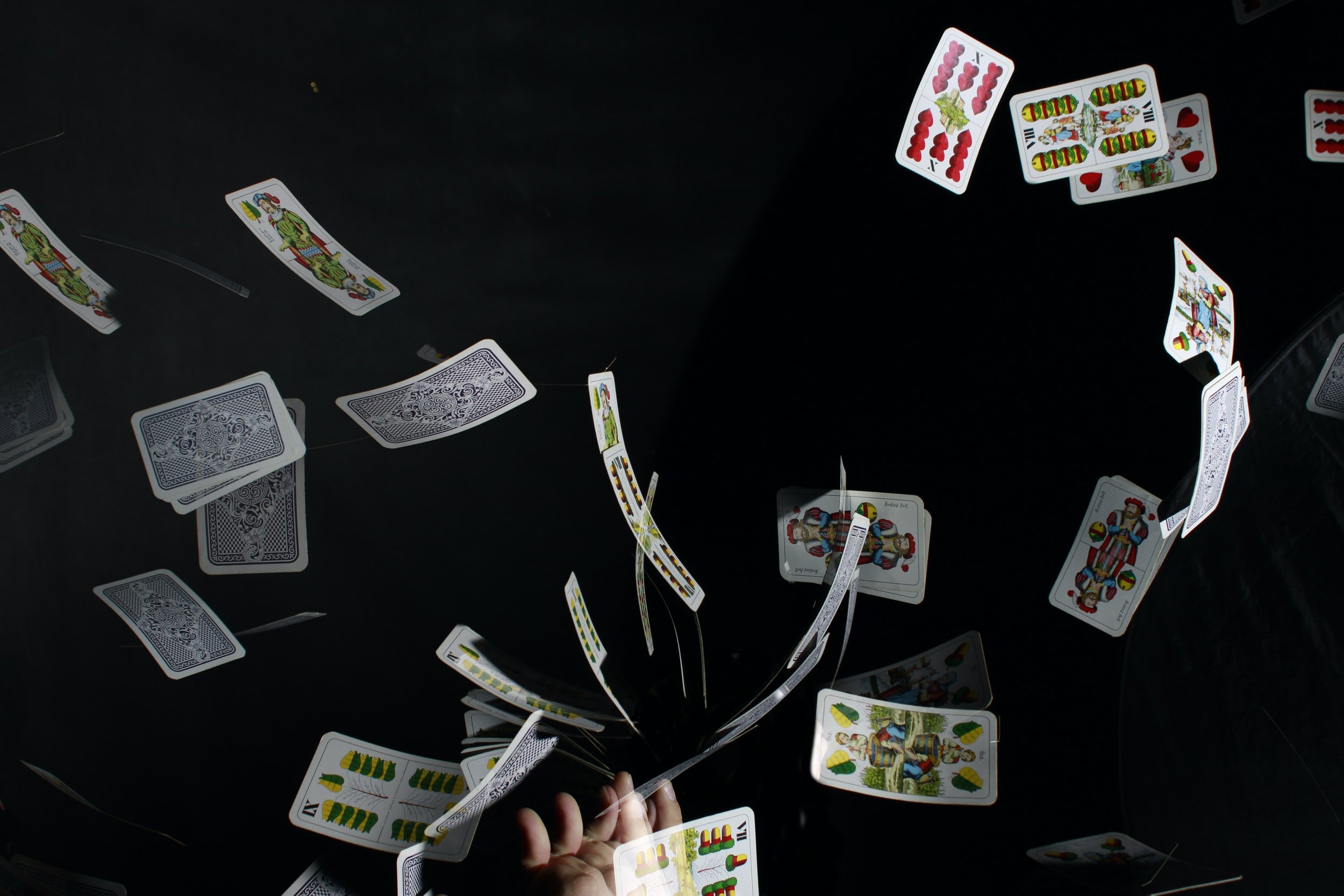





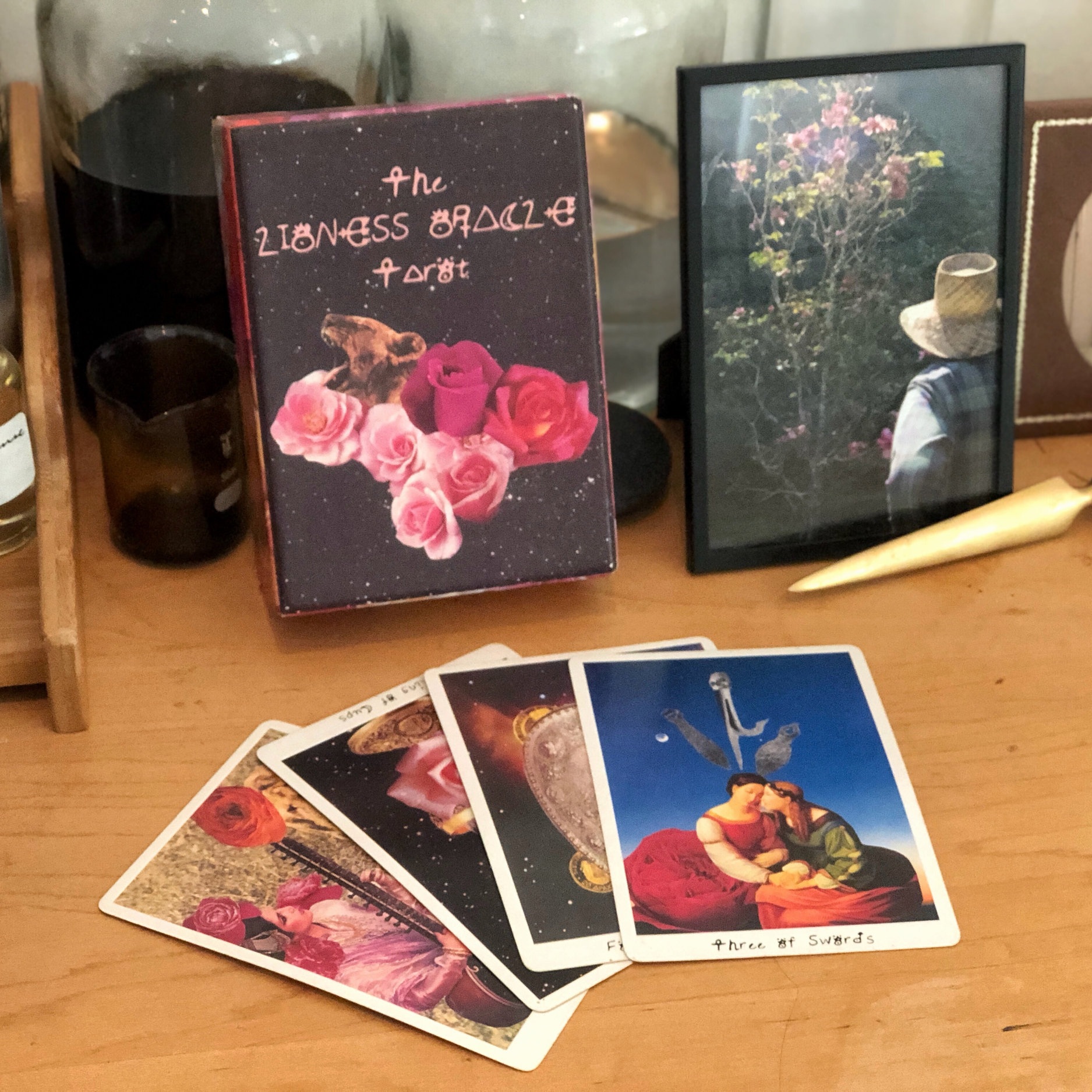



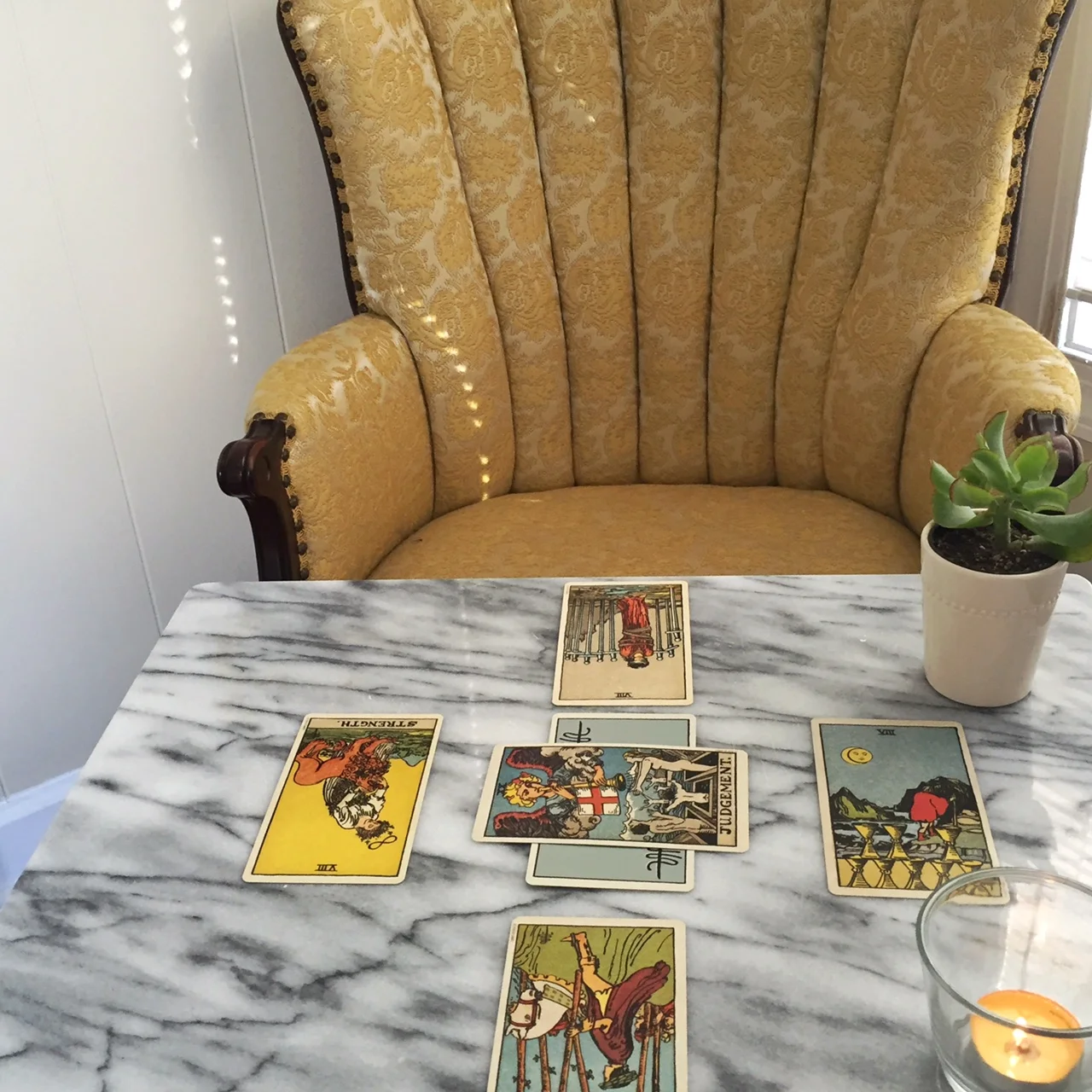

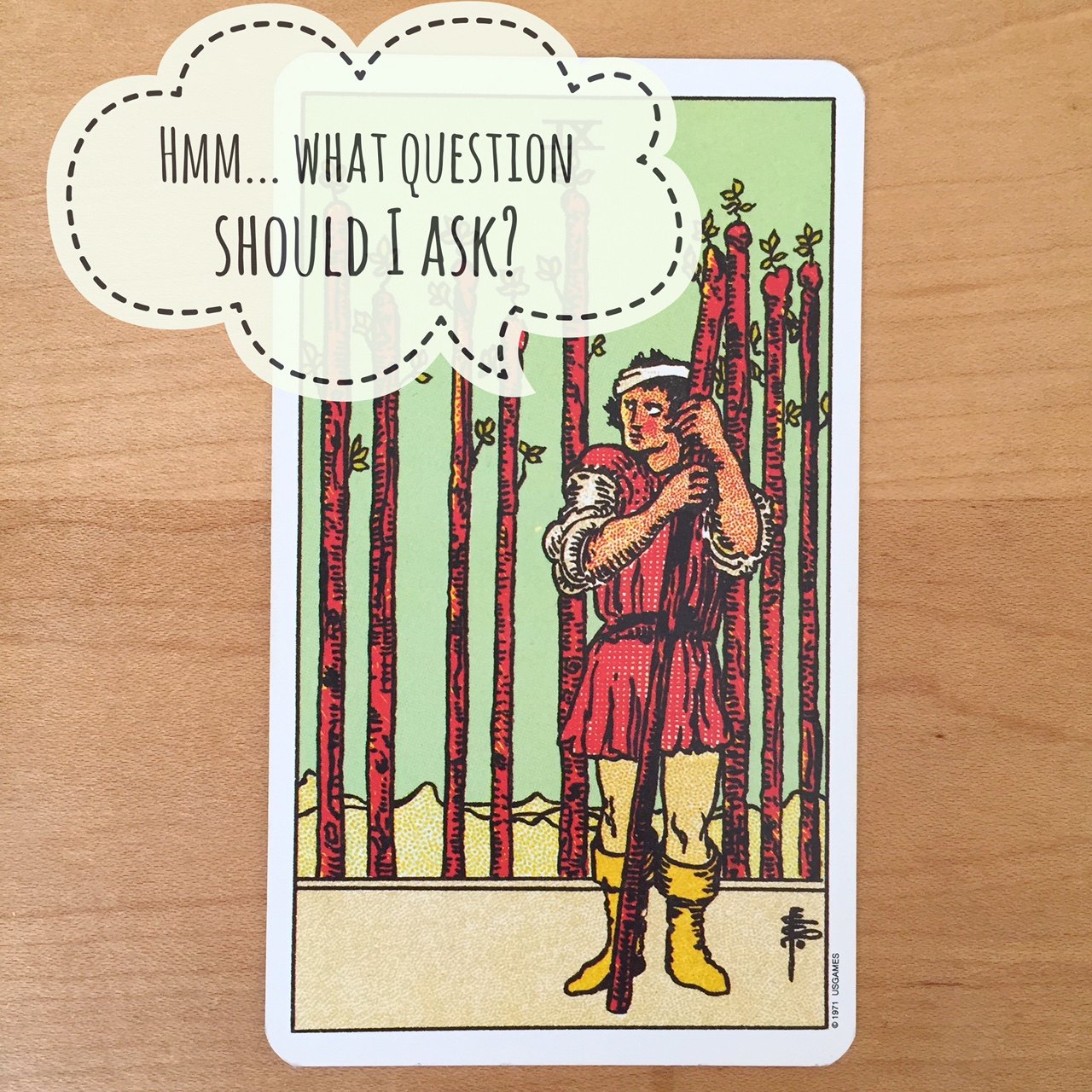



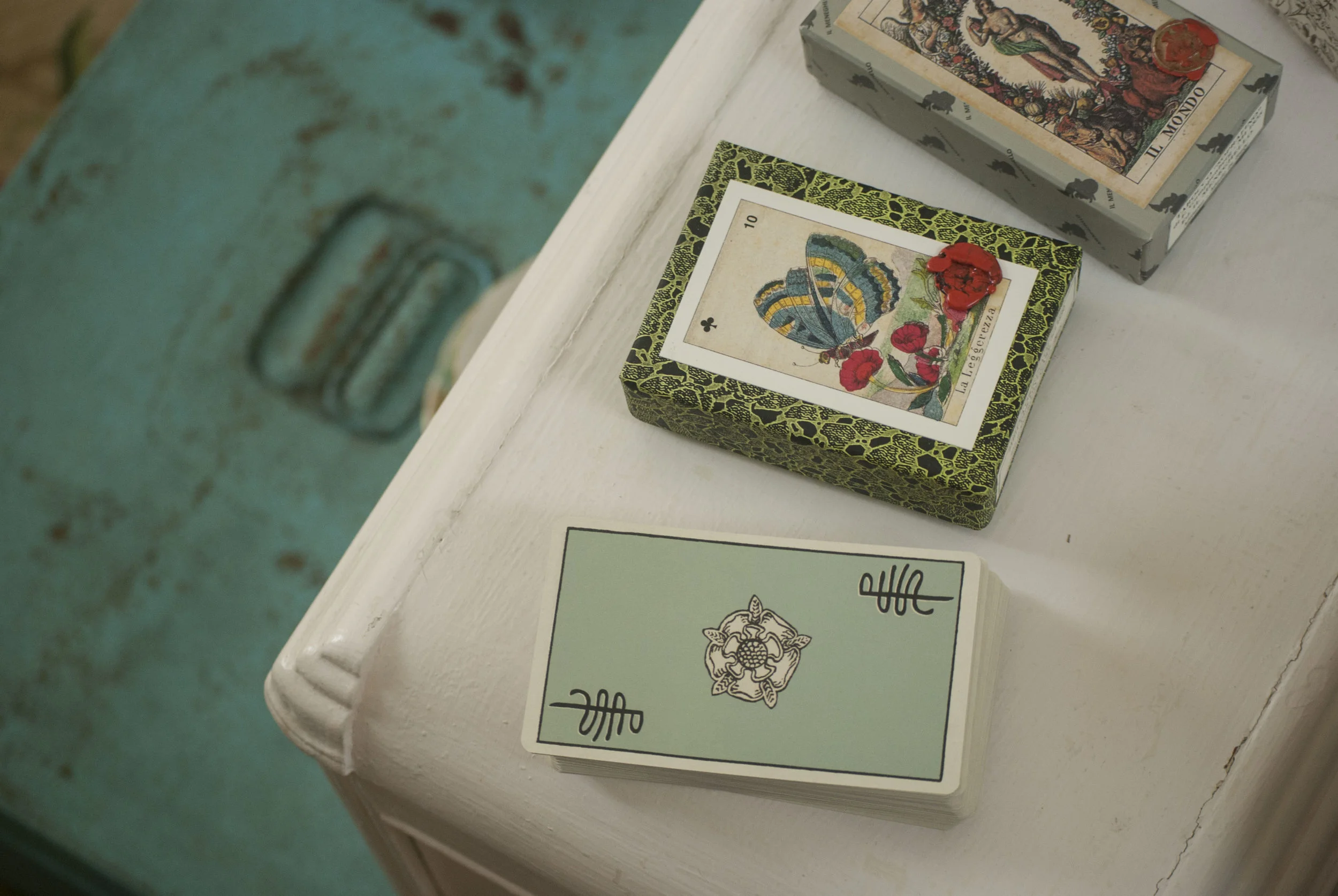

It’s so easy to get serious when reading tarot. With cards like The Tower, The Hermit, and the Ten of Swords, who could blame you for painting sweeping pictures, waxing poetic about existential dilemmas, and focusing on the mythic in the mundane? I’ve noticed, however, that sticking to these areas when reading can lead to burnout, not to mention a limited understanding of the cards. If everything is epic, how can you go to the cards to understand smaller issues like daily decisions, exciting and low-stakes choices, or even open-ended explorations of themes?